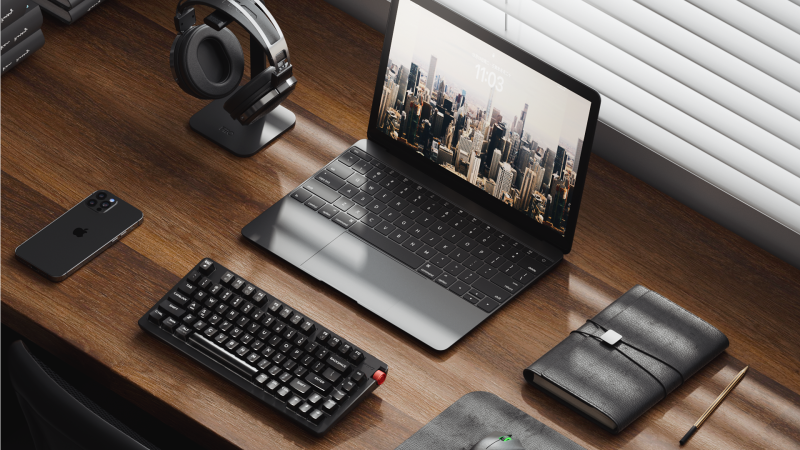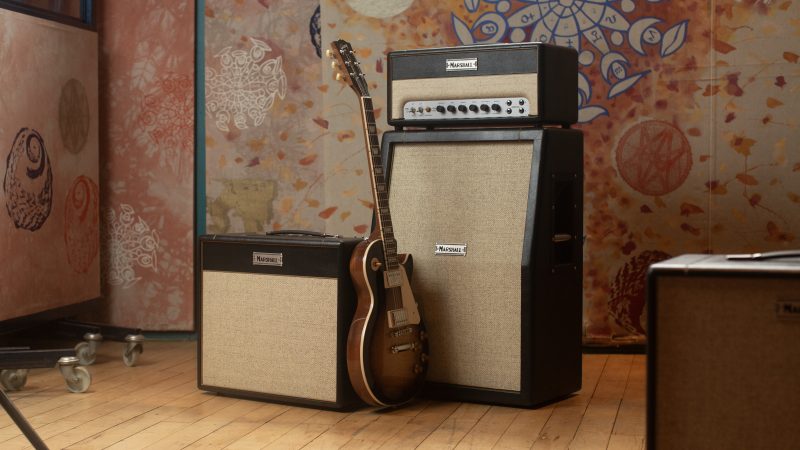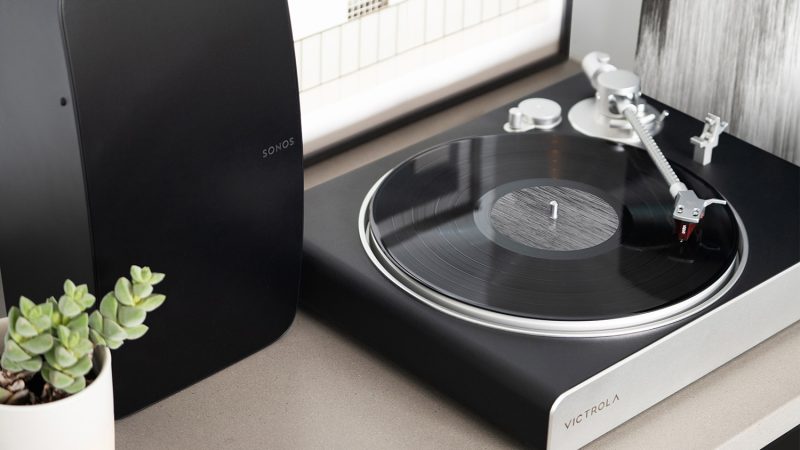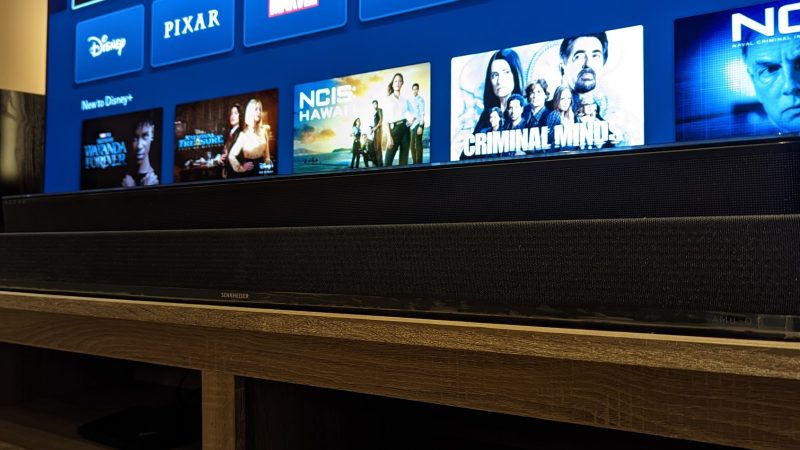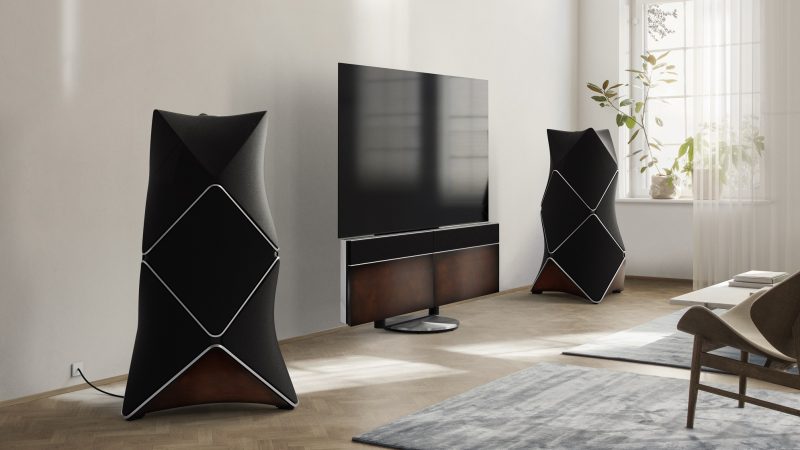Pioneer SE-MHR5 hi-res headphones review
 You may have seen the announcement on our sister site, Hifi Pig, that Pioneer recently released their new SE-MHR5 headphones aimed at those who enjoy Hi-Res streaming. Well, I’ve been living with some of these cans for the last couple of weeks and I am ready to tell you about them.
You may have seen the announcement on our sister site, Hifi Pig, that Pioneer recently released their new SE-MHR5 headphones aimed at those who enjoy Hi-Res streaming. Well, I’ve been living with some of these cans for the last couple of weeks and I am ready to tell you about them.
The Pioneer SE-MHR5 is the latest addition to the company’s Pure Audio headphone range which currently tops out with the SE-Master 1.
These headphones are equipped by robust drivers that capture a wide 7Hz-50kHz frequency range. The SE-MHR5 headphones also features a lightweight copper-clad aluminium wire voice coil which promises crystal clear, hi-res audio throughout the frequency range.
You also get a dual-baffle back chamber that serves two purposes. One, to control the balance between the mid and low frequencies. Second, the noise is isolated for greater listening enjoyment.
With all that, Pioneer are making a definite effort to win over the audiophile crowd. I really liked their personal digital audio player, the XDP-100R, and now the company have released the SE-MHR5 headphones. These cans have been designed to suit the mobile listener.
Let’s see how they do in this Gadgety review.
Pioneer SE-MHR5 design
The SE-MHR5’s are a good looking, well-built pair of headphones.
The metal headband connecting the two cups is reassuringly solid beneath its plastic case. It doesn’t lose any of that with the adjustable band all the way out either.
 This solidness extends to the ear cups which have a hard edge on them as opposed to the more rounded designs.
This solidness extends to the ear cups which have a hard edge on them as opposed to the more rounded designs.
Between the cups and headband is a small rose-gold accent which is likely to divide opinion but, even I like them. In real life they look, tastefully bling – if that’s possible.
A simple silver-coloured Pioneer logo adorns each cup. The cups themselves are black and finished with a raised spiral pattern that is incredibly tactile.
The parts that looked like they were going to be metal, are all plastic. This obviously keeps the price down as well as the weight. Unfortunately, this does also have the knock-on effect of making them feel a little less than premium.
The SE-MHR5 are on-ear, rather than over-ear cans but still manage to be about the same size as their larger brethren. This might be a style thing, or a necessity to cater for the drivers.
 The headphones fold up to be packaged away in the bundled compact carrying case. This is a nice touch which a surprising amount of headphone makers seem to overlook.
The headphones fold up to be packaged away in the bundled compact carrying case. This is a nice touch which a surprising amount of headphone makers seem to overlook.
Cables – balanced and unbalanced
A huge plus point is always the detachable cable. Thankfully, that is all present and correct here. Not only that, the headphones come bundled with a balanced cable too!
 The leads are keyed on the headphone end which means you need to plug and twist it in to the headphones. This means no accidental unplugging from the headphone end at least.
The leads are keyed on the headphone end which means you need to plug and twist it in to the headphones. This means no accidental unplugging from the headphone end at least.
The included cables are easily differentiated by the number of black lines on the plug at the end of the lead. Two black lines is the standard cable, while three can be found on the balanced one.
Balanced headphones are generally considered to offer superior sound quality through doubling slew rate and voltage swing power, reducing THD distortion, and almost eliminating crosstalk.
That’s a lot of technical information, but all you need to know is that when correctly used balanced headphones result in a clearer, more focussed sound, with a more expansive soundstage.
If you have the option of using the balanced headphone cable then you should do, but you’ll need a balanced headphone amplifier.
If you don’t know whether your headphone amplifier is balanced or not, or if you’re using the standard headphone jack on your phone or laptop, then you probably can’t use balanced headphones and should stick to using the cable which has just two black lines on its jack.
Isolation
These headphones are closed-back, meaning sound has a tough time leaking out and disturbing those around you. Conversely this also means you are able to drown out the noise of your commute or co-workers.
The thick memory foam padding on the cups adds to the headphone’s great isolating characteristics.
Pioneer SE-MHR5 performance
Kit used
As the Pioneer cans can be used balanced, I took advantage of using them with the Geek Out V2 Infinity portable DAC/ Headphone amp while it was here through my laptop. Other sources were my Musical Fidelity V-90 HPA which is plugged in to my main living-room system, and the Astro MixAmp Pro through my PC (in core mode – no added EQ). They were also put to the test through my NVIDIA Shield tablet via an Oppo HA-2 portable DAC/ Amp. Last, and by no means least, my trusty Nexus 6P was used daily on the commute. Files used were either TIDAL Hi-FI, CD, FLAC or LP tracks.
Performance
 In the home
In the home
Modern tunes
The Pioneer SE-MHR5 are powered by 40mm drivers and starting off my listening test using my PC rig and Queensryche’s ‘Jet City Woman’ was fairly favourable. The picked bass laying the foundation for the guitar intro came through nicely balanced. When Geoff Tate comes in with his vocals things are still sounding good. It’s when the whole band ramps it up there seems to be some clashing around the low mids and bass frequencies.
Throwing on something a little more acoustically driven, ‘Last Night of the World’ by Bruce Cockburn. Again, the bass seems too forward – even for this bass player. The guitar is still lovely and lively and the vocals clear. It just seems that the bass comes through a little too pronounced, flat and lacking personality.
Joni Mitchell’s ‘Just Like This Train’ fairs much better. Vocals just forward of the backing band. There’s the right amount of space around the individual instruments. The rim shots are snappy and the acoustic guitar nicely jangles away.
The intro to ‘Devil You Know’ by Jesus Jones swirls away and the sequenced array is defined. The vocal layer is clear. When it kicks in it feels like this is more the kind of tune that the SE-MHR5 have been designed for. The bass pounds confidently, punctuating the rhythm of the tune. Staccato samples pan between the headphones. This is perfect for shutting out the world.
 The preference for bass could well be due to both of the SE-MHR5’s drivers are within a ported driver housing. This creates a dual chamber to increase the bass performance. You can see the vented ports at the base of each cup. To my ears this means a slightly biased sound.
The preference for bass could well be due to both of the SE-MHR5’s drivers are within a ported driver housing. This creates a dual chamber to increase the bass performance. You can see the vented ports at the base of each cup. To my ears this means a slightly biased sound.
Classical
Stravinsky and Beethoven, amongst other classsical/operatic composers, fared better than I imagined they would.
The former’s ‘L’oiseau de fue – Suite (1919) – Berceuse’ starts with the oboes opening rich and mellow. The harps shimmer and the reedy bassoons are all faithfully reproduced. The strings are placed perfectly and the timpani cuts through nicely.
’12 Contredanses, WoO 14 – No.12′ by Beethoven is a lively piece and isn’t slow to whip round to full flow. This being dance music of its time, the bass end is well represented. Again, the Pioneers seem to get a bit carried away on this side of things to the detriment of some of the mids.
On the road
This is where the SE-MHR5 excel. The slight bass bias seems to level out as the ambient hubbub increases. This makes the headphones particularly great on the tube. Usually the bass end struggles against carriage noise on the underground. Now, the slightly scooped EQ of these cans is working in its favour.
Mew’s ‘Apocolypso’ cuts through with guitars and vocals taking care of the upper register and the rhythm section holding it all together.
’10:15 Saturday Night’ by The Cure is deliciously lo-fi and I would normally not use this track as part of a review but, as all the detail remains presented to the listener even on a busy Oxford Street, I think it worth mentioning.
Arctic Monkeys and ‘I Bet You Look Good on the Dancefloor’ keeps its Northern swagger and attitude intact. Again, everything seems on an even keel on the commute.
Balanced
The bass leaning characteristics found in home listening through my Hi-Fi and PC evened themselves out when using the headphones in balanced mode. The soundstage also seemed to widen.
I would not say that it was a night and day transformation but if you do own an amp with a balanced headphone output then I would heartily recommend using it with these headphones.
Pioneer SE-MHR5 review conclusion
 The Pioneer SE-MHR5s are well made and feel like they’re built to last – even with their plastic-feeling outer construction.
The Pioneer SE-MHR5s are well made and feel like they’re built to last – even with their plastic-feeling outer construction.
A detachable cable will always win me over, and the option of using them in balanced mode with a compatible headphone amplifier is a definite bonus.
I found the fit of the headphones perfect for my head and the leather-look ear cups were comfortable. Saying that, over the last few days of the London heat-wave, sweaty lobes were an issue – but you’d get that with any similar cans.
The headphone’s sound, with its strong emphasis on treble and bass, is more suited for the commute. In a more quiet environment the bass is too noticeably forward for my liking. If you like your dance, techno, hip hop tunes, however, you may well welcome that flavour (flava?) of tuning.
The SE-MHR5 do look great and do impress when out and about. For home listening, if I didn’t have a balanced headphone amp, I’d opt for headphones which have a more even response.
I would definitely advise an audition if you’re in the market for headphones in this price range.
Pioneer SE-MHR5 price and availability
The SE-MHR5 are available now for a RRP of £199. You can currently nab some on Amazon for £189.99.
For more details, head on over to the Pioneer website.
Specifications at a glance
Type: Closed dynamic type
Driver Unit: 40mm
Frequency Response: 7 Hz to 50 kHz
Input: 1,000 mW
Sound Pressure: 102 dB / 0.2V (in input) at 1kHz
Impendence: 45 ohms
Cable: Detachable and one sided, 1.2m (Connector: 3.5mm/I-shape/Rocked type)
Plug: Stereo mini/ L shape
Weight (g): 240
Accessories: Balanced cord/ Carry


